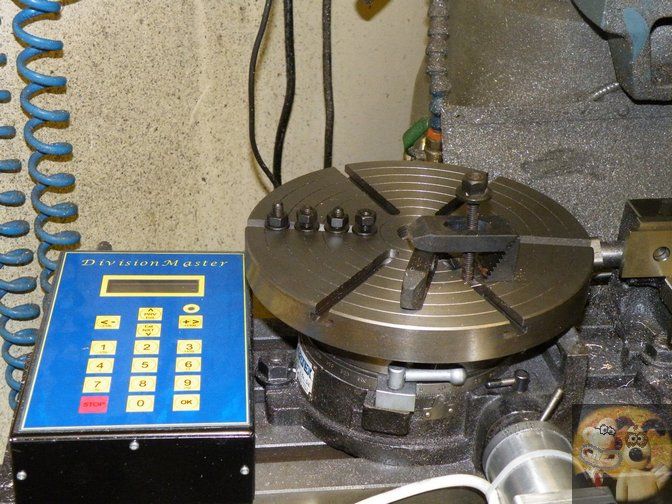- Joined
- Jun 24, 2010
- Messages
- 2,358
- Reaction score
- 931
Nice John. I'm sure yours is the pictorial I must have saw, just forgot where. Thanks.

Speaking of dividing head, I thought it might be a neat accessory to have an ER collet on the end for quick round stock setups. I cant recall the thread, maybe 1.5x8 tpi? Has anyone made such an adapter?
Reading GHT books is a good way to answer the questions "do I need one of these" or " what is it for".Arguably, the best book is actually two. The classic English model engineer George H. Thomas wrote and described his workshop tools in Model Engineer. Actually, it was the late Professor Dennis Chaddock, designer of the Quorn tool and cutter grinder encouraged GHT to do this. If you add 'Ned' Westbury, Tom Walshaw writing as Tubal Cain and Kenneth Cleeve Hart writing as Martin Cleeve, one has a pretty heady mixture of talent. When Thomas died, Neil Hemingway of Hemmingwaykits encouraged Dr Bill Bennett - a fellow student with my late wife to complete the intended books.
These became the Model Engineers Workshop Manual and Workshop Techniques. The latter embodies the earlier Universal Pillar Tool book and Dividing and Graduating.
So George starts with a basic little rotary table which hadn't any of these complicated ball bearings and even degrees around its perimeter to perhaps the most sophisticated dividing head which contained not one worm wheel but two to do ANY configuration.
To mention the construction of division plates, Thomas describes how he drilled his with a pair of dividers but goes on to described what can be achieved with a division plate with ONE hole.
Somewhere, under a heap of rusting metal- my workshop roof came off- are my Quorn and assorted GHT 'goodies' Nearer and probably just as inaccessible is the knowledge of how I tried to copy the 'Words and music'
There you have it
Norman
This attached PDF file should help in setting up and using an RT. Unfortunately, it is for the high precision type as sold by LMS and Arc Euro, which has a different wormwheel ratio that the Vertex type. but it does give a lot of useful information.
Hope it helps
John
This attached PDF file should help in setting up and using an RT. Unfortunately, it is for the high precision type as sold by LMS and Arc Euro, which has a different wormwheel ratio that the Vertex type. but it does give a lot of useful information.
Hope it helps
John
![hv8large[1].jpg hv8large[1].jpg](https://cdn.imagearchive.com/homemodelenginemachinist/data/attach/38/38218-hv8large-1-.jpg)
![Diagram[1].jpg Diagram[1].jpg](https://cdn.imagearchive.com/homemodelenginemachinist/data/attach/38/38219-Diagram-1-.jpg)
Also looking at the 6" Vertex I cannot find any mention of the center to center distance of the two hole that may be used for mounting in the Vertical position. Is there something I'm missing?
You will be OK with the 6" Vertex on your mill. I managed to fit it on my SX3 mill which has a narrower table than yours but I had to lengthen the slots so I can bolt it to the narrower pitched T slots on my mill when the RT is on its side (eg. to use the tail stock). To do this, I mounted the RT via an angle plate to the milling table and being Cast Iron, the base was very easy to machine. I think this mod to use the larger RT is worthwhile as the 4" table is very restrictive in my view due to the much smaller working area.
Mounting it with the table facing upwards under the spindle was not an issue.
Rod, Thanks for that info. Unless I get very lucky, I figured I'd have to do as you did. Any ideal what the center to center dimensions were before you machined them?

C,
Do bear in mind though, for the T-nuts, only use good quality materials or actually buy some as I have done for my new vice. I have seen table slots ripped out because someone thought they could get away with inferior items or even hex headed bolts that don't quite fit right.
John
Yes, indeed, John.
My first Myford Super 7 B had a distorted boring table caused by incorrect use. I had the awful job of having to scrape it because Myford could not/would not supply a new saddle casting.
As you are aware, Myford slots are not the standard way of doing things and I'm glad you've highlighted the dangers.
Meantime, my regards
Norman
Enter your email address to join: